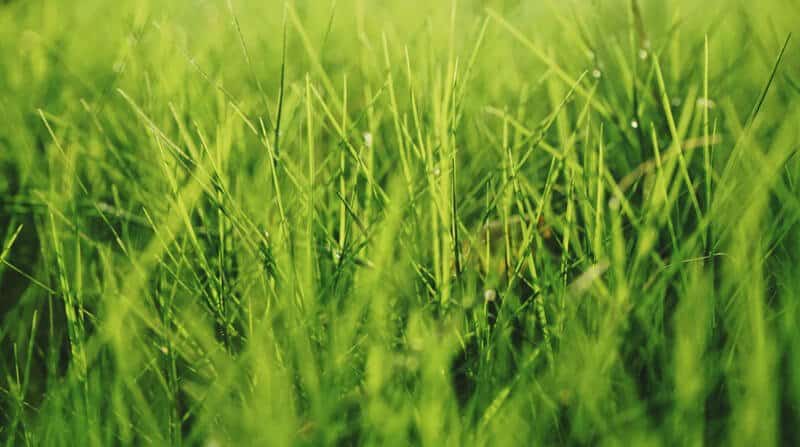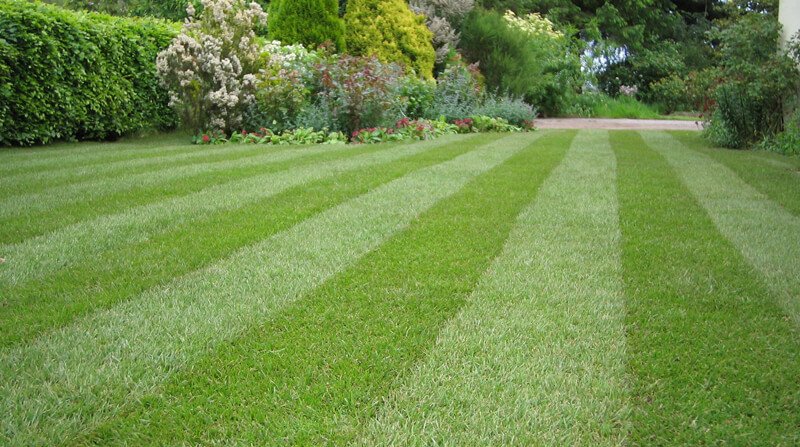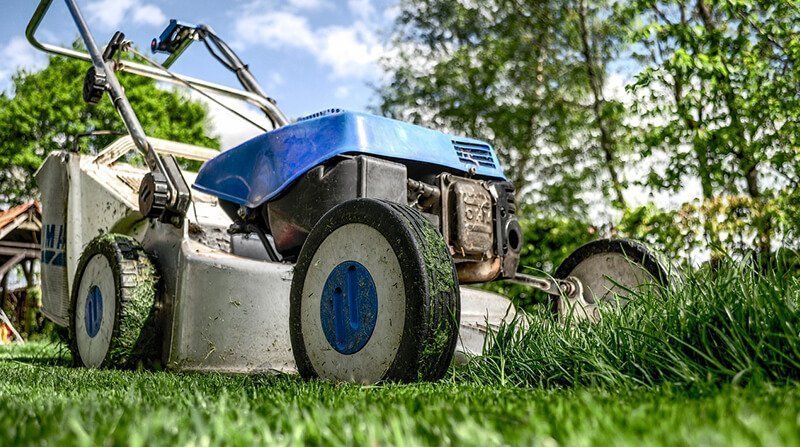Cutting grass too short is one of the most common lawn care mistakes gardeners make.
Letting the grass grow tall and then hacking it all off in one go has a serious impact on the health and appearance of your lawn.
If you mow your lawn close and it’s thin or patchy and full of weeds, then chances are, you’re the cause of the problems.
In order to create and maintain a beautiful, thick, green, healthy lawn, you need to understand what grass is and how it works.
Then caring for it becomes easy and you’ll be able to create a lawn which your friends and neighbours will envy.
Two Misguided Reasons For Close Mowing
In my experience, people mow their lawns really short for one of two reasons;
- In an attempt to not have to mow as often
- To try and make their lawn look like a manicured putting green
Let’s address these beliefs individually.
To Not Have to Mow As Often
If you’re not keen on gardening then the temptation is to just mow the lawn every two weeks instead of every week.
You let the grass grow over the course of a couple of weeks and then mow it really short.
While this might save you an hour every other week, the health of your lawn will suffer for it.
To Make Your Lawn Look Like a Putting Green
Who doesn’t want their lawn to look like the putting greens at Gleneagles?
Many gardeners try to achieve this look by mowing really close.
This is not the way to do it!
A Quick Lesson on Grass

As I said, in order to understand why mowing your lawn too close is a bad idea, you need to know how grass works. Then it’ll all become clear.
Unlike animals, grass doesn’t eat and digest food to survive.
Instead, grass creates its own food via photosynthesis.
The Lawnsmith has a very good way of describing photosynthesis;
“Photosynthesis is more akin to how a factory works – raw materials go in one end (water & fertiliser), energy is used (in this case sunlight instead of gas or electricity) and food is produced (carbohydrates and proteins, not pizzas).
This food is then either stored for hard times just as we store fat, or used to grow leaves and roots; equivalent to muscle and bone.”
A Grass Leaf is Like a Solar Panel
Solar panels on the roof of your house trap sunlight to produce electricity.
In order to produce as much electricity as possible, the solar panels need to trap as much sun as possible. This means big panels on south-facing roofs. If you put them on north-facing roofs or in the shade, they won’t be able to trap as much light and therefore they won’t produce as much electricity.
It’s the same with grass but instead of producing electricity, it powers the process of photosynthesis to produce food.
The bigger the grass leaf, the more sunlight it can trap and therefore the more food it can produce.
When you reduce the size of the grass leaf by mowing, you reduce the amount of sunlight it can trap. Therefore you reduce the amount of food it can produce.
Grass Leaves Also Store Food and Energy
Another function of grass leaves it to store food and energy in the form of water, carbohydrates and proteins.
It keeps these in reserve to use in time of stress.
For example, in hot summers when there’s a lack of rain or in winter when the weather is cold frosty, the grass uses those reserves to stay alive.
What Happens When You Cut Grass Too Short
When you cut the grass too short you cause a number of problems. Each problem having a knock-on effect causing another.
You Take Away The Grasses Stored Food Supply
As you now know, grass stores food in it leaves for harder times.
When you mow too short, you take away that food supply. This is especially bad in the summer months when the grass needs that supply of food to survive the hot, dry conditions.
You Reduce its Ability to Produce More Food
Not only do you take away the grasses food supply, by cutting off the leaf, you also rob it of its ability to produce any more.
If this doesn’t kill the grass it’ll put all its (now very limited) resources into repairing itself and growing new leaves as quickly as possible.
This comes at the expense of root development.
And that causes other issues;
Intolerance to Drought
As the grass has now sacrificed root development to produce new leaves, the roots don’t grow deeply. Instead, they stay in the upper layers of the soil.
Then, when it gets hot, the sun dries the ground and any moisture evaporates. This means the grass has no water and is unable to consume nutrients from the soil.
As a result, the grass goes dormant. It may even die.
Weed Moss and Disease Takeover
If the grass manages to survive this long, it’ll be weak and sparse.
This is when weeds, moss and disease tend to take over and completely ruin your lawn as the grass isn’t dense or strong enough to fight them off.
What About Golf Courses and Bowling Greens?

You might wonder then, how do greenkeepers keep bowling greens and golf courses in pristine condition when the grass is only 6mm long?
Firstly, this is due to the types of grass used to create these surfaces. They’re mainly bent grasses which don’t typically appear in domestic lawns. They’re slow-growing and tolerate close mowing.
Not only that, these types of surfaces have strict maintenance regimes which enable the grass to survive at such a short height.
This typically means mowing every day with a high-end cylinder mower and the tiny clippings mulched back into the turf, regular irrigation, a strict fertiliser schedule and a lot more.
So Can’t I Have a Putting Green Lawn?
Of course, you can.
That said, this type of lawn takes a lot of time, effort and knowledge to create and maintain.
You’ll need to choose the very best grass seed. You’ll also need to invest in the best cylinder mower you can afford and learn all there is know about caring for it.
If you’re not a keen gardener, trying to achieve a golf course kind of lawn isn’t a good idea.
So How High Should You Cut the Grass?

I answer this question in greater detail in this article: What Height Should I Cut My Grass?
But really the answer is…
It Depends
It’s a balancing act between achieving a nice uniformed length and making sure the grass stays healthy.
The correct height very much depends on the lawn, the environment in which it resides, the type of grasses it’s made up of and how often you mow.
The seasons also play a part in how high you should mow. During spring and autumn when the grass is growing quickly you’ll typically mow more often so you can gradually reduce the height.
However, during the summer and winter, it’s best to keep the grass a little taller. The leaves contain that all-important energy and nutrients it needs to survive the harsh conditions.
If you use a lawn mower with a roller, the height of the grass also affects how bold the striped finish is. The shorter the grass, the less bold that finish will be.
A General Rule of Thumb
A general rule of thumb is to never remove more than a third of the leaf at a time.
So if your grass is around 6cm tall, only cut a maximum of 2cm off the height to bring it down to 4cm. Then when it grows to 5cm, reduce the height by 1.5cm to bring the height down to 3.5cm.
Even when cutting long grass, bringing the height down gradually by only ever removing a maximum of a third of the leaf, the grass will maintain health and vigour.
Most family lawns look beautiful when they’re between 3cm – 6cm high.
In Conclusion
As you can now see, there’s more to mowing the lawn than many people first think.
Grass leaves are vital organs which need to be treated with respect.
You could have the best lawn mower in the world but if you use it to cut grass for cutting grass too short you’ll ruin your lawn.

